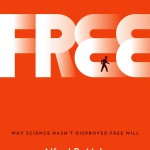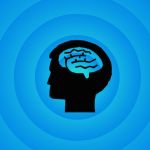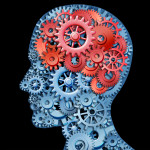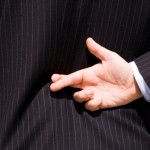Free Will Disproved by Science?
by Matt Nelson
Filed under Anthropology, Science
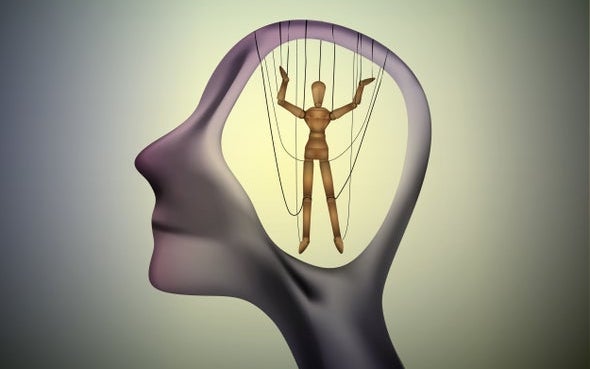
For those who reject the notion of free will, our experience of making our own decisions is nothing more than a deep-seated illusion. “The reality is,” insists biologist Anthony Cashmore, “not only do we have no more free will than a fly or a bacterium, in actuality we have no more free will than a bowl of sugar.”
Those who argue for the nonexistence of free will often do so on scientific grounds. And those who offer a scientific “proof” against free will point to one type of experiment more than any other—namely, those done and inspired by neurobiologist Benjamin Libet.
In 1983, Libet seemed to prove that the unconscious processes of the brain—the interaction of molecules, electrical discharges, and the like, which are associated with decision-making—are ultimately in control. In other words, our voluntary decisions begin unconsciously in the brain. So it is the brain, not the person, that decides the actions we “feel” to be voluntary.
Libet-style experiments involve having a subject carry out a simple prescribed behavior (flexing the wrist, bending a finger, etc.) whenever he feels the urge to do so. Watching a special clock while he executes his movement, the subject notes the specific time at which he decided to move. The goal of the researchers is to plot a timeline of averages, noting the typical sequence of brain activity (e.g., by EEG), muscle activity (e.g., by EMG), and conscious urging (by subjective reporting). The expectation is that if our intentional actions are truly free, associated brain activity will follow the moment of decision. But this is not what Libet found.
Why does this matter? Well, it has obvious implications for the truth of the Catholic worldview. It also concerns human nature and how we understand ourselves as human beings. For if we don’t have free will, then this may dramatically change how we govern ourselves and interact with others. Much of how we operate as individuals, communities, states, and institutions presuppose that we are personally responsible for our actions. But if it were proven that we are not, this would entirely undermine our rationale for structuring and governing society on the assumption that we are free creatures.
So did these experiments really succeed in proving that free will is an illusion? They did not.
First of all, the experiments look exclusively at spontaneously willed behavior with brain activity. Participants were asked to act when they felt the urge. These experiments, then, say little about choices resulting from rational planning. At most, they suggest the nonexistence of free will in the restricted case of willful spontaneity. The voluntary actions with which they are concerned are barely more than split-second reactions. As some critics have observed, such studies tell us more about “picking” than “choosing.”
But even that conclusion might be overly hasty, for the concept of free will is not as plain as often presumed. Free will is a spiritual appetite for the intellectually known good. A decision, moved by free will, is not a quantifiable event like a neuronal discharge. Nor is it reducible to an instantaneous impulse or urge. And a willed movement is not always a purely linear cause-then-effect event like a cue ball striking an eight-ball into action. The activity of the will is more “smoothed out” and pervasive than an impulse. And it is enacted in layers. Thus, even in a setting like the Libet-style experiments, the free will cannot be isolated as cleanly as many assume.
For each study participant, in carrying out the prescribed movement, the will to move in this way at this time is nested within a multiplicity of other intentions motivating the same action. A singular act of wrist flexion is driven also (presumably) by the will to participate in the study; by the desire to follow the specific instructions given; by the desire to contribute to neuroscientific advancement; and in the will to do something for the common good. Additionally, the subject may bend his wrist because he desires to fulfill a class requirement—a class he desires to pass—or because he thinks it will hold the attention of the attractive research assistant across the room. The point is this: due to the complex integration of intentions involved in a single choice to move a body part, these studies cannot account for all the reasons that cause a person to conduct a singular movement. There is a sense in which the free decision of the research subject to flex his wrist “now” originated even before he entered the research lab.
We find ourselves here at an important juncture. It shows that once we have started making claims about free will’s reality or unreality, we have turned from all observation, measurement, and data analysis. We have reached the far side of the physical and have (perhaps unwittingly) thrust ourselves into the realm of philosophy.
Let’s turn to some further considerations. The Libet experiments relied on machines to capture brain and muscle activity. But it must be noted that neither EEG nor fMRI, nor any other form of advanced imaging, can capture the qualitative content of brain activity. When researchers carry out Libet-style experiments, they note the onset of brain activity and compare it to that of muscle activity and, more importantly, the time when the subject reports consciously willing the prescribed movement. But there is no precise way for scientists to know—even when the subject acts on an urge—whether the brain activity recorded or observed is representative of decision, or decision-making, or planning to make a decision.
In fact, more recent research shows the same brain activity believed to induce conscious decision-making is also found in subjects even when they do not make a conscious decision. Libet’s initial conclusion was “that cerebral initiation even of a spontaneous voluntary act . . . can and usually does begin unconsciously.” But these recent studies call such a conclusion into serious question.
There are several other critiques and limitations that have a significant impact on how much (or little) Libet-style studies actually prove. For an excellent detailed discussion of these limitations and their philosophical implications, read Alfred Mele’s little book Free.
At most, Libet-style experiments prove that a constrained subset of willed behaviors is not as freely executed as we are inclined to assume. But as we have seen, they hardly prove even that much. As far as Catholics traditionally conceive human freedom, such experiments pose little threat—and thus, the human person has every reason to believe that he remains infinitely more free than a bowl of sugar.
Related Posts
Note: Our goal is to cultivate serious and respectful dialogue. While it's OK to disagree—even encouraged!—any snarky, offensive, or off-topic comments will be deleted. Before commenting please read the Commenting Rules and Tips. If you're having trouble commenting, read the Commenting Instructions.




